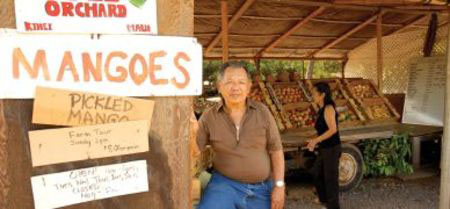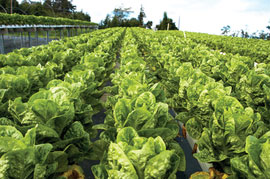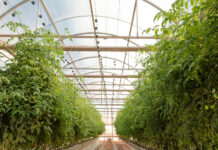Story Jill Engledow | Photography by Steve Brinkman

Maui may seem an agricultural Eden, with its wide range of microclimates for growing crops from apple bananas to zucchini. But those who farm here for a living know that it’s never easy, and that Hawai‘i growers face a unique set of challenges. Fortunately, Maui ranchers and farmers are coming up with creative ways to turn their love of the land and its products into sustainable businesses.
We all need them to succeed. Hawai‘i imports at least 85 percent of its food, with enough supplies on hand to feed the Islands’ population for only an estimated five to seven days. While no one thinks it’s realistic to aim for 100 percent food self-sufficiency, we could do better. If we grew more food on local farms and even in backyards, “in a crisis, we could meet some of our basic needs and extend the amount of time we could survive on our own,” says Alex de Roode of the Sustainable Living Institute of Maui.

When Captain Cook arrived in 1778, Hawai‘i was completely self-sustaining. Maui was a favorite port for whaling ships partly because New England whalers liked the white potatoes that grew so bountifully in Kula (now rarely seen because of competition from imported bargain brands). During World War II, local growers supplied not only local needs but those of the military. Agriculture was king until tourism took off in the 1970s, and many ate from home gardens or plantation-maintained dairies and ranches.
“Agriculture is our cultural heritage, the lifeline of our community, the force behind our economy,” says Maui County Farm Bureau President Warren K. Watanabe. “If we lose ag, we lose who we are.”
Farming still is a key ingredient in a tourism-based economy; the exotic fruits and flowers that enchant visitors help contribute to Maui County’s $162 million in crop and livestock sales each year, while keeping the islands green. Even a small increase would make a big difference. According to the state Department of Agriculture, if Hawai‘i replaced just 10 percent of its food imports with locally grown products, it would create $313 million within the state’s economy, generate $6 million in tax revenue and create 2,300 jobs.





